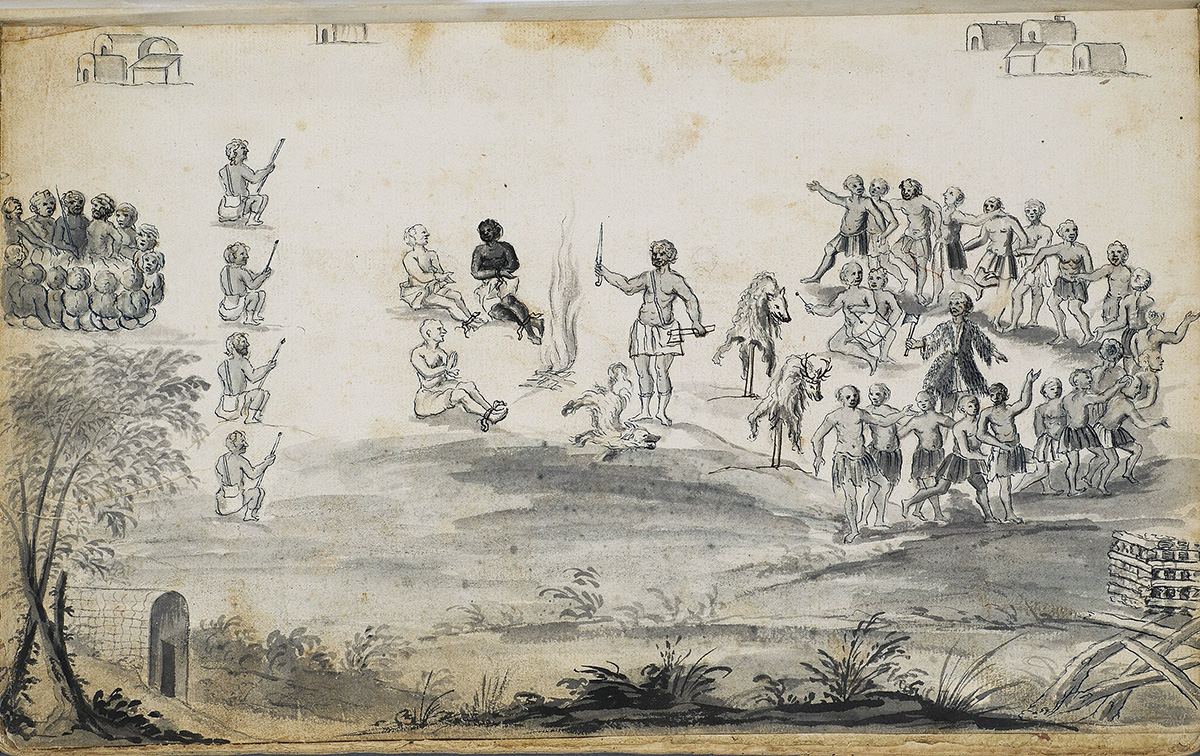
The misadventures of a founding father

If Christophe de Graffenried had known what was in store for him, he never would have ventured across the Atlantic in the first place.
Seeking his fortune, the baron could not resist the lure of the bounties promised him. But what he got instead was political unrest, an Indian uprising, poor harvests and settlers he greatly disliked.
“I found them for the most part godless, rebellious people; among them murderers, thieves, adulterers, cursers, and swearers… God knows what I endured with them,” de Graffenried said in his account of the founding of New Bern. He reserved the harshest words for some of his fellow Swiss, calling them “the excrement of the whole Canton of Bern”.
If these were the founder’s friends – at least they were supposed to be the people on his side – it is little surprise New Bern got off to a very bad start.
De Graffenried was either a man in the wrong place at the wrong time – as history can be interpreted – or a much bigger crook than the settlers he so despised.
According to Matt H Allen, one of the founders of the North Carolina newspaper, the Goldsboro News, de Graffenried was hated for his treachery.
Allen, writing in the early part of the 20th century, focussed on de Graffenried’s capture by the Indians along with another official, Surveyor-General, John Lawson. Lawson was tortured to death while the Swiss was spared.
Embezzler
Allen says de Graffenried convinced the Indians he was a king and it would therefore be very unwise for them to harm him. But he failed to come to the defence of Lawson. Afterwards, Allen says, he “left the Colonists, mortgaged their lands and embezzled their money, as appears from the petition of the Palatines in 1714 addressed to the King of England.”
Late historian Hugh Talmage Lefler concurred with Allen to a certain extent, saying de Graffenried had a dislike for Lawson, as the Swiss indeed clearly stated in his own memoirs. “If [Lawson] had not turned us aside from our first design [to plant a colony in Virginia]… where we should have been more in security, better assisted and better supported, to all appearances we should not have failed in our enterprise.”
De Graffenried may simply have been a victim of circumstances beyond his control.
He can be seen as a man caught between the jealousy and mistrust that existed between the English who administered the colonies, the German-speaking settlers and the local Indian tribes who had been double-crossed over their land rights.
Unlucky
Even if that was the case, luck never seemed to be on de Graffenried’s side – despite coming from a well-known patrician family in canton Bern. Before his Carolina misadventure, he had tried his hand in both France and England, but his father pulled him back to Switzerland where he ran into debt.
It was at this time that the Bern authorities were looking for a way to buy land in one of the English colonies, and settle a few hundred “undesirables” – paupers and religious dissidents – there. De Graffenried saw a chance to recoup his losses.
The company eventually headed by de Graffenried purchased large tracts of land from the “Lord Proprietors”, a group of noblemen who had been granted ownership of Carolina by the English crown. The plans were eventually broadened to include hundreds of “Palatines”. These were Protestant dissidents whom the English had transported from the devastated Rhineland to refugee camps on the River Thames.
A first group of 650 Palatines sailed with Lawson to America in January, 1710, while de Graffenried stayed behind in England to wait for his Swiss to arrive.
But the Atlantic voyage was an omen of what was to come: Around half of the settlers died during the stormy crossing from “ship fever” and other diseases.
De Graffenried, the newly appointed “Landgrave of Carolina” and “Baron of Bernburg”, arrived a few months later – in September – and laid out the little town he called New Bern. But within a year, the colony had been overwhelmed by the Indians and almost wiped out.
De Graffenried returned to Switzerland in 1714, leaving the rest of New Bern’s 296 years of history to be written by others.
swissinfo.ch, Dale Bechtel
De Graffenried was born in his ancestral village of Worb in 1661 and died there in 1743. His father, Anton, was Lord of Worb and a minor government official.
De Graffenried studied at the universities of Heidelberg and Leyden. During his travels to London, he met the Duke of Albemarle and other Lords Proprietors of Carolina.
Back in Switzerland, he met a Swiss explorer, Franz Ludwig Michel, who persuaded him to join and invest in a company that proposed to mine American silver deposits and to settle Swiss and Swiss Anabaptists in Pennsylvania or Virginia.
The company broadened its plans to settle colonists in Carolina and to include among them many Palatines.
The company purchased from the Lords Proprietors nearly 19,000 acres of land on the Neuse and Trent rivers, including the future site of New Bern, and on the White Oak River, which de Graffenried called by the Indian name of Weetock.

In compliance with the JTI standards
More: SWI swissinfo.ch certified by the Journalism Trust Initiative

















![The four-metre-long painting "Sonntag der Bergbauern" [Sunday of the Mountain Farmers, 1923-24/26] had to be removed by a crane from the German Chancellery in Berlin for the exhibition in Bern.](https://www.swissinfo.ch/content/wp-content/uploads/sites/13/2025/12/01_Pressebild_KirchnerxKirchner.jpg?ver=8f77363a)












You can find an overview of ongoing debates with our journalists here . Please join us!
If you want to start a conversation about a topic raised in this article or want to report factual errors, email us at english@swissinfo.ch.